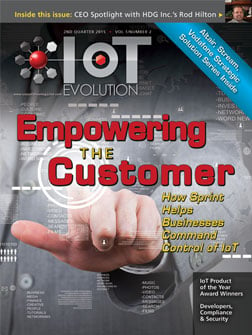The unified communications market, including messaging and software, increased 20 percent in 2007, following a 19 percent jump in 2006, a Campbell, California-based market research firm is reporting today.
The IP

contact center also grew by 24 percent in 2007, according to Infonetics Research (News - Alert), after a 26 percent increase in 2006.
According to Matthias Machowinski, Infonetics Research’s directing analyst for enterprise voice and data, sales of communicator software clients are taking off as a key component of unified communications.
“The Nortel/Microsoft (News - Alert) alliance drove growth in 2007, and Microsoft captured close to half the communicator market,” Machowinski said. “Market share will likely bounce around in the coming years, as vendors from different backgrounds try to establish themselves as the leader in the nascent UC market and promote their offerings aggressively.”
The report, “Unified Communications (News - Alert) and IP Contact Centers,” finds that UC and IPCC sales grew 22 percent, taken together, to hit $1.05 billion worldwide in 2007, “and healthy growth is expected through at least 2011.”
Infonetics officials say their study tracks add-on applications for IP PBXs that provide communication features in addition to basic IP PBX

functionality, including unified messaging and communicator, and IP contact centers, including automatic call distribution, interactive voice response, and computer telephony integration

.
Company officials say the report provides worldwide market share and regional market size and forecasts for North America, Europe-Middle East-Africa, Asia Pacific and Caribbean/Latin America.
Companies tracked include 3Com, Aastra (News - Alert), Alcatel-Lucent, Avaya, Cisco, CosmoCom, IBM, Interactive Intelligence, Microsoft, Mitel, NEC, Nortel, Siemens, ShoreTel, Vertical, and ZTE, according to Infonetics.
According to the report, unified messaging

forms the bulk of the UC market, led by Avaya (News - Alert), at about 33 percent. The report also found that sales of the still-small communicator segment rose 164 percent between 2006 and 2007.
Infonetics officials also say that Microsoft in 2007 became the worldwide leader in communicator revenue, and that the transition from TDM

to IP is causing the IP contact center market to grow more rapidly than the overall contact center market.
Michael Dinan is a TMCNet Editor. To read more of his articles, please visit his columnist page.
Don’t forget to check out TMCnet’s White Paper Library, which provides a selection of in-depth information on relevant topics affecting the IP Communications industry. The library offers white papers, case studies and other documents which are free to registered users. Today’s featured white paper is Fixed Service Strategies for Mobile Network Operators, brought to you by Comverse.
 Private Branch Exchange (PBX) Private Branch Exchange (PBX) | X |
| Originally, telephone features were provided by telephone central office switching systems, often called CENTREX.�PBX systems emerged as customers wanted to have more calling features and control over...more |
 Internet Protocol (IP) Internet Protocol (IP) | X |
| IP stands for Internet Protocol, a data-networking protocol developed throughout the 1980s. It is the established standard protocol for transmitting and receiving data
in packets over the Internet. I...more |
 Time Division Multiplexing (TDM) Time Division Multiplexing (TDM) | X |
| TDM divides transmission channels into time-separated channels. TDM was designed to provide each channel with a fixed amount of bandwidth. The tutorial explains more....more |
 Unified Messaging Unified Messaging | X |
| One of the more interesting applications for multi-media messaging
which has been around for almost a decade but not widely used is
visual voice mail. This software allows the user to see their voi...more |
 Computer Telephony Integration (CTI) Computer Telephony Integration (CTI) | X |
| CTI or computer telephony integration is the linking of computing systems with telephone systems. The caller is connected via telephone companies to a customer ACD-PBX. The ACD-PBX passes the teleph...more |
 Internet Telephony Magazine
Click here to read latest issue
Internet Telephony Magazine
Click here to read latest issue CUSTOMER
CUSTOMER  Cloud Computing Magazine
Click here to read latest issue
Cloud Computing Magazine
Click here to read latest issue IoT EVOLUTION MAGAZINE
IoT EVOLUTION MAGAZINE




